Table of Contents
Buckwheat
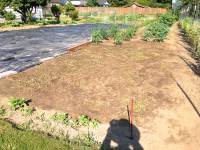
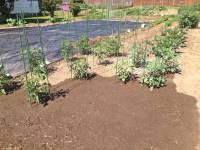 I cleared some rye start that wasn't thick enough to keep out weeds. And I had some buckwheat seed left from last year, so on July 10 I put a buckwheat cover crop here for a quick “smother crop” and to add some organic matter to the soil. By July 14 I had a good many buckwheat seedlings.
I cleared some rye start that wasn't thick enough to keep out weeds. And I had some buckwheat seed left from last year, so on July 10 I put a buckwheat cover crop here for a quick “smother crop” and to add some organic matter to the soil. By July 14 I had a good many buckwheat seedlings.
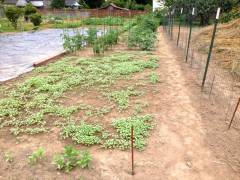
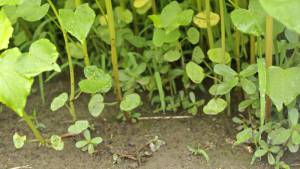 Under the buckwheat were developing many weeds that used that window of sunshine to get their start before the buckwheat could provide smothering shade. Next time I will wait for the seeds to sprout, then terminate them - and THEN plant the cover crop.
Under the buckwheat were developing many weeds that used that window of sunshine to get their start before the buckwheat could provide smothering shade. Next time I will wait for the seeds to sprout, then terminate them - and THEN plant the cover crop.
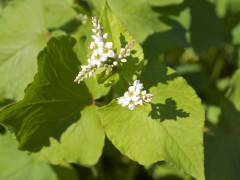
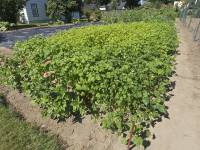 Buckwheat grew quickly. The first flowers were forming by August 8. Now I'm planning to terminate the buckwheat - and the weeds - soon.
Buckwheat grew quickly. The first flowers were forming by August 8. Now I'm planning to terminate the buckwheat - and the weeds - soon.
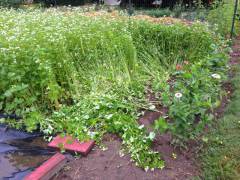 It's August 14 now and I really must turn under the buckwheat! I had a few minutes so I took a swipe with the diamond hoe to see how it would go. The hoe works great, both for terminating the buckwheat and for lopping off the weeds and perslane that have been lurking beneath the buckwheat cover.
It's August 14 now and I really must turn under the buckwheat! I had a few minutes so I took a swipe with the diamond hoe to see how it would go. The hoe works great, both for terminating the buckwheat and for lopping off the weeds and perslane that have been lurking beneath the buckwheat cover.
Still, for terminating a large area the scythe is quickest and easiest.
2015 update: turning under
For areas of up to 1000 square feet I'm finding it overall quicker to use my peasant (grub) hoe to take down the buckwheat, immediately chopping it into the soil. This breaks up the stalks, ensures termination and leaves a good bit of the stem in the soil. It's strenuous work, but it gets the buckwheat ready to decompose into the soil quicker than my other manual efforts.
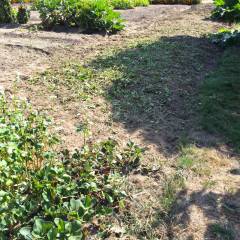 I found that the straight-through process of hoeing is quickest overall. Scything and then hoeing seems like more work and takes longer - like the hoeing is more difficult the way the scythe lays the stems down.
I found that the straight-through process of hoeing is quickest overall. Scything and then hoeing seems like more work and takes longer - like the hoeing is more difficult the way the scythe lays the stems down.
What about the tiller? When the buckwheat gets three feet tall the stems are sturdy enough to get wound around the blades of the tiller, so the approach of one thousand slaves bogs down. A few good hoers would be more effective.
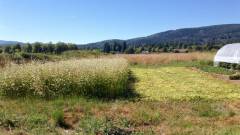 For a larger area, in this photo about 2,000 square feet, I scythed the buckwheat and left it as a mulch to discourage weeds. (In August the field was so dry it didn't encourage slugs.) I sowed a cover crop of tillage radish and oats directly into it.
For a larger area, in this photo about 2,000 square feet, I scythed the buckwheat and left it as a mulch to discourage weeds. (In August the field was so dry it didn't encourage slugs.) I sowed a cover crop of tillage radish and oats directly into it.
